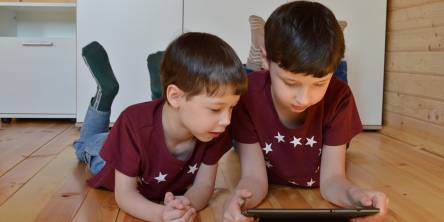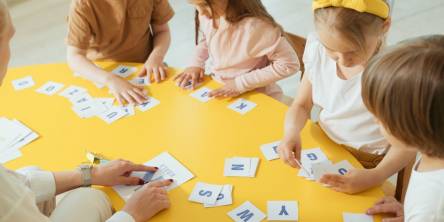The Problems with Bullying in School-Aged Kids

Although it may not seem like it, bullying is a daily problem. It can be very obvious, as it can also be hidden in comments or jokes that severely harm the affected child. To say that there is a school where this issue is not present would be a lie. According to a survey, 75 out of every 100 schoolchildren are or have been victims of physical and psychological violence by their peers.
Forms of bullying that occur in schools
In various activities at school, every school member, be it, teachers, employees, or students, is always involved to participate in them. Although aimed at educating, not infrequently these activities trigger conflicts that lead to a form of bullying. To be aware, several types of bullying may occur in the school environment.
Verbal bullying
This type of bullying is usually uttered through unpleasant words. It can be in the form of ridicule, swearing, insults, insults, reproaches, and slander. All kinds of expressions in the form of words that are hurtful to others are forms of verbal bullying.
Physical bullying
Talking about the physical, this is closely related to the physical or a person's body. Physical bullying is a form of violence that occurs by physically hurting someone. This form of violence can take the form of kicking, punching, slapping, or spitting on someone.
Relational bullying
In schools, relational bullying occurs because certain groups appear opposite to other groups or individuals, resulting in the exclusion of someone who is considered opposite, in addition to being ostracized, a student who is considered "different" from most students in school will be ignored, ridiculed, with everything that can make the student alienated from the group.
However, there are different community-based services for overcoming this problem. So, how to reduce the number of children and adolescents who are part of this negative statistic? Here, we give you some tips to prevent more cases of bullying in your school.
# For teachers
• It is important to create an environment of trust where students express how they feel.
• During the classes, explain what bullying is and its repercussions.
• Monitor the behavior of children or young people, to detect negative attitudes.
• Act quickly if there is a case of school violence.
• Remain in coordination with the Psychology Area to reduce or avoid more cases of bullying at school.
# For students
• Don't judge others on their appearance or social status.
• Support those classmates who feel alone in class.
• Don't use violence as a defense mechanism or problem-solving with other partners.
• If you witness any case of bullying, notify the authorities of your school.
• And if you are a victim of some kind of abuse in your school, talk to your parents and teachers. They will know how to guide you.
# If you are a father
• Promote values in your children to prevent them from having bad reactions.
• Do not hesitate to put limits on your little ones, in case you see negative attitudes in them.
• Talk about bullying at home and what it can cause.
• Bring up the subject at parent meetings and look for solutions in case a case arises at school.
• If any of your children is a victim of bullying, seek support from psychologists, teachers, teen and family services, or other parents. The more tips you find, the faster you will solve this problem.
Special information on school regulations
Once the bullying structures have become established in one class, it is often a good idea to transfer the victim to the parallel class or even to another school. Most of the time, the initiative comes from the victim's parents, who hope that the situation will be defused for their child in the short term. There is no general answer to whether this decision is correct. From a pedagogical point of view, it is important to consider the possible effects on the people involved in the bullying process:
• Perpetrator: We successfully bullied the class victim.
• Victim: If I stay, I will continue to be bullied. There is no guarantee that I will be better in the other class.
• Spectators: Now we don't have to deal with that anymore. I have to be careful not to become a victim myself, otherwise, I have to leave the class as well.
• Teachers: Now it's quiet, the main problem has been solved for now.
Exclusion of the perpetrator from the class and coming to terms with the remaining classmates to prevent further bullying with other victims is more time-consuming but makes more sense for the learning experience. The improvement of the class community and the (re) integration of the bullied pupil in the class should be the real goal of pedagogical endeavors.
Similar Articles
As a single mom, you’re faced with a lot of responsibilities. You’re not just the one keeping the lights on and the fridge stocked; you’re also the one to make sure the kids feel safe when they go to bed at night.
In today's digital age, children are exposed to a myriad of technologies that offer both educational opportunities and potential risks.
Explore modern parenting strategies—nutrition, eco-friendly clothing, and emotional connection—with tools like Kids Height Ruler for mindful growth tracking.
Hey there, rockstar parents! Let's talk about something as fundamental as ABCs and as thrilling as finger-painting masterpieces: early literacy skills.
Did you know that the average parent pushes a stroller for over 600 miles in the first year of their child's life? That's the equivalent of walking from New York City to Cincinnati! As parenting evolves, so do the tools we use to navigate our daily lives with little ones.
It's easy to reduce parents to stereotypical "mom" or "dad," but that's a shame because they lived full lives before you were born. Everyday life's distractions, such as status updates and small chats or the habitual avoidance of difficult conversations, can get the best of us
What relationship do you have with the mirror? Do you like to see your reflection, the curves of your body, and the details of your face? Or do you reject your image because you don't consider it up to your standards?
The top mom blogs that share parenting ideas and unfiltered side of being a mother. You need information to help you fully know how to raise your kids.
A baby brings a lot of excitement and happiness into your life, but he also introduces you to plenty of stress and fatigue. Be it your first child or second, family life's daily pressures create a ton of strain and anxiety in your motherhood life.









